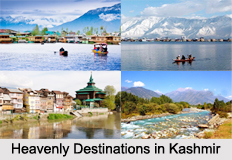 Walking Tours in Kashmir are considered as one of the rich walking tour in India after Rajasthan. It is the place in India, which developed before Indus Valley Civilisation and later transformed into the medieval fortified city under Delhi Sultanate and Mughal rule in India, in the midst of Pir Panjal Mountain Range and Himalayan Mountain Range in India.
Walking Tours in Kashmir are considered as one of the rich walking tour in India after Rajasthan. It is the place in India, which developed before Indus Valley Civilisation and later transformed into the medieval fortified city under Delhi Sultanate and Mughal rule in India, in the midst of Pir Panjal Mountain Range and Himalayan Mountain Range in India.
Introduction of Walking Tours in Kashmir
Walking Tours in Kashmir spent a long time field-testing on the walks of historians, city dwellers and city searchers. It was introduced in 2010 and early 2011. Most of the walks or craft itineraries are within the city of Srinagar, though the organisations of Walking Tours in Kashmir have taken guests in special situations to villages out of town, such as Kanihama (a hamlet dedicated tokanishawl weaving) on the way to Gulmarg, where the adventure tourism is at the peak.
Walking Tours in Kashmir and Srinagar
The walks are all set in the old town of Srinagar, the capital of Jammu and Kashmir and the craft tour ventures into some of the relatively newer parts of town. Currently there are four walks to choose from to the national and international tourists. The craft tours can be custom designed on the basis of interest in the different material and textile crafts.
Starting point and the Ending Point of Walking Tours in Kashmir
To wrap up the walk the duration is about two hours to two days. There is another half an hour spent before and after in picking up the guests and dropping them off to a convenient location.
Historical Tourism in Kashmir
The walks are known as the historical tourism in Kashmir and Srinagar. The introduction and orientation are both to cultivate the historical as well as the popular cultures of Srinagar. The architecture and plan of the old city (around the river, Jhelum) becomes the reference point to narrate stories about past empires, philosophical traditions and geo-politics. The bazaars and the crafts are the source of stories about the development of Kashmir`s rich mutli-cultural aesthetic. In the ruins of the Martand temple, near Anantnag; the Ziyarat Aishmaqam en route to Pahalgam, there is a short trek up from Harwan where one can still see the plinth of the erstwhile Buddhist viharas; a trek to the Gangbal glacier and lakes from Kangan/ Naranag; Badshahi Baag - the Mughal garden of Dara Shikoh built by the Jhelum in Bijbehara. There are other hidden gems such homes of famous traders or small shrines within Srinagar city, which interest guests in architecture or design.
Related Articles
Jammu and Kashmir, Indian State
Costumes of Jammu and Kashmir
Early History of Kashmir Valley
Districts of Jammu and Kashmir
Culture of Jammu and Kashmir
Sonamarg, City in Jammu and Kashmir
Tourism In Jammu And Kashmir
Kashmir, India
Cities of Jammu and Kashmir
Anantnag District, Jammu and Kashmir



















